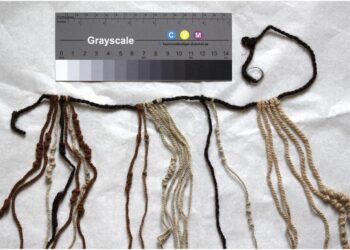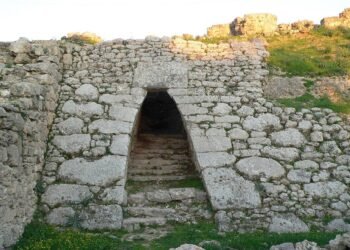Archaeologists from the National Institute of Anthropology and History (INAH) have unearthed ancient Maya settlements in the dense forests of Campeche, Mexico, using advanced LiDAR technology. This technique, Light Detection and Ranging, employs pulsed laser light to generate precise 3-D digital maps of the terrain, revealing hidden structures beneath the forest canopy.

The project, titled “Expanding the Archaeological Panorama of the Central Mayan Lowlands,” focused on an area in the municipality of Calakmul, where the team discovered settlements of modest dimensions.
Led by Ivan Šprajc from the Research Center of the Slovenian Academy of Sciences and Arts, the team explored a vast, unpopulated area characterized by wetlands, known locally as bajos, and rocky terrain. The challenging environment, featuring intermittent water channels and thin soil layers, was deemed unsuitable for extensive agriculture, which likely contributed to the sparse population and modest size of the settlements.
“The characteristics of this region, with its bajos and rocky terrain, are not favorable for agriculture, leading to a lower density of ancient occupation compared to surrounding areas,” Šprajc explained. “There are almost no cultivation terraces or channels in the bajos, and the settlements we found are modest, with few major buildings.”
The archaeological survey, covering approximately 140 square kilometers within the Balam Kú Biosphere Reserve, revealed settlements dating from the Late and Terminal Classic periods (CE 600-1000). Physical exploration indicated few standing walls or architectural decorations, reinforcing the impression of less elaborate cultural development compared to other Maya regions such as Petén to the south and the Chenes and Chactún regions to the north and east.
Despite the lack of major urban centers, the LiDAR survey identified intriguing features, including evidence of levelling, plazas, and pyramidal constructions. One notable site, first discovered in the 1990s, featured a plaza and a pyramidal structure, with a canal nearby that drained accumulated water from the plaza. Another site included a civic-ceremonial center with buildings up to 13 meters high and a ball court in its eastern sector, possibly dating back to the Early Classic period (CE 200-600).
The research was funded by the Slovenian Research and Innovation Agency and the Milwaukee Audubon Society, along with contributions from various companies and individuals. The team included archaeologists Octavio Esparza Olguín, Atasta Flores Esquivel, Quintín Hernández Gómez, Vitan Vujanović, and surveyor Aleš Marsetič.
“The inevitable impression is that the Maya culture of this region we have just explored was notably less elaborate than in the Petén to the south, and the regions of the Chenes and Chactún to the north and east,” Šprajc concluded. The findings attest to the presence of human groups in the last centuries before the Spanish arrival, long after the Central Lowlands experienced political disintegration and demographic decline towards the end of the Classic period (CE 200-600).
The collected ceramic material still requires detailed analysis to better understand the settlement dynamics and cultural developments of the region.
More information: National Institute of Anthropology and History























